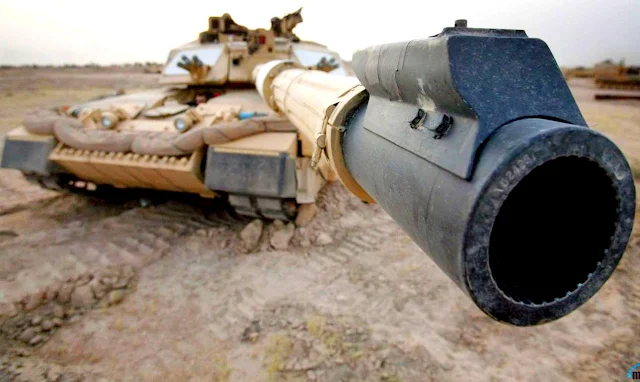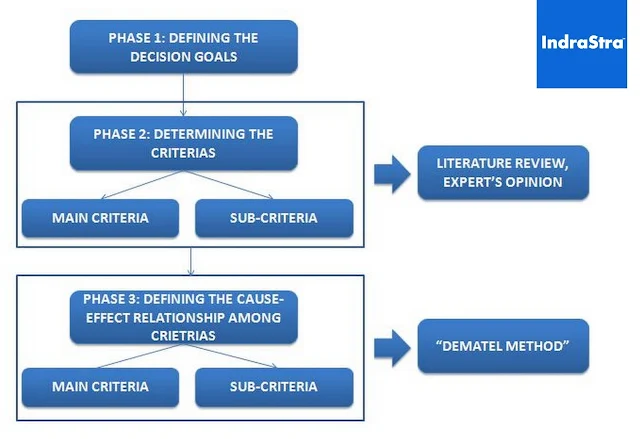Main battle tanks (MBTs) have always been in the heart of all military campaigns and have enabled armies to fight across the full spectrum of war. Countries need to consider the complex interactions between subsystems of MBTs in the decision phase of a design process or MBT acquisition. In order to define the interaction among the subsystems of ‘system of systems’, which is MBT system for this case, this article aims to provide an introduction to a broader research in determining the criteria and their sub criteria affecting MBT selection problem and to analyze the cause and effect relations among these criteria.
By Yavuz Gazibey,
Ozkan Kantemir and Akif Demirel
Main battle
tanks (MBTs) have always been in the heart of all military campaigns and have
enabled armies to fight across the full spectrum of war. Countries need to
consider the complex interactions between subsystems of MBTs in the decision
phase of a design process or MBT acquisition. In order to define the
interaction among the subsystems of ‘system of systems’, which is MBT system
for this case, this article aims to provide an introduction to a broader research in determining the criteria and their sub criteria
affecting MBT selection problem and to analyze the cause and effect relations
among these criteria.
Image Attribute Mota.ru
The
capabilities of tanks are being questioned more than ever with the increasing
use of long-range precision-guided weapons or potentially more effective weapon
systems such as attack helicopters and new anti-tank weapons. There is also
the wheel versus track dilemma which is always at the surface with the
development of any new armored combat vehicle.
In the book The
Outlook for Tanks (IDR 2002) by Ogorkiewicz, the author indicated that the
answer to ‘the need for tank’ question lies in the capabilities of tanks and
the likely demand for such capabilities in the future. Major H.M. Anthony of
Canadian Forces College, once discussed Leopard-2 MBT use by Canadian Army in
Afghanistan, concludes that MBTs have enabled Canadian Army to fight across the
complete spectrum of conflict in order to achieve operational level objectives.
Supporting this conclusion, Ogorkiewicz also commented that MBTs remain as
effective counter tank weapons and for that reason; close combat will require
the continued use of MBTs. Furthermore, C.F. Foss argued through one of his article
at Jane’s Defence Weekly that MBTs have proven their adaptability in evolving
battlefield requirements, which results in the countries’ willingness of
retaining MBTs as part of maneuverer capability. Thanks to the advances in
technology, MBTs will remain as decisive as they have been in the future,
because of their impressive capabilities such as cross-country mobility, heavy
direct firepower and armour protection.
A weapon
systems selection problem has always taken academics attention since it is a
strategic decision with likely significant impacts on the efficiency of the whole
defence system. Weapon systems are getting more sophisticated and expensive as
the military technologies rapidly develop, which accelerates research on
methods for selection of these systems. Multiple criteria decision making
(MCDM) methodologies can be used to address this problem. Due to the complex
structures of MBTs, forming a ‘System of Systems’, the criteria affecting MBT
selection should be investigated together with the MBT selection methods.
Within this perspective, in this study, the literature is simultaneously
reviewed in terms of both the methods for selecting MBTs and the criteria used
in the selection process.
Evaluation
Framework:
Table 1: The Main and Sub-Criteria of MBT Selection
Due to the complex criteria interactions in the MBT selection problem, DEMATEL, a multiple criteria decision making method, is applied on the main and the sub criteria separately to understand the interrelations. DEMATEL not only allows confirmation of the interdependence among the selection criteria but also considers the interrelationships. Contrary to the AHP method, which treats the criteria as independent of each other, DEMATEL method tackles with interdependent factors and determines the level of interdependence among them. The results show that Survivability main criterion has the strongest central role among the main criteria for MBT selection, while the followers are firepower, mobility and command and control (C2).
Figure 1: Evaluation
framework for MBT decision problem
In this study
MBT selection problem is investigated DEMATEL methodology, in a three-phase
framework as presented in Fig. 1. In the first phase, the decision goal is
determined. The second phase of this framework includes determining the main
criteria and sub criteria that affect the decision-making problem through
literature review and expert opinion. Finally, DEMATEL method is used for
analysis and evaluation of the criteria affecting MBT selection problem.
Figure 2: The influence
relationship map of the Main Criteria
It is also shown that, in terms of sub criteria for MBT selection, ballistic protection, a sub criterion of survivability main criterion, has the highest degree of influence over most of the other sub criteria. However, physical dimensions/silhouette, another sub criterion of survivability, is the most affected sub criteria. The top five sub criteria in terms of central role are determined as physical dimensions/ silhouette, ballistic protection, power/weight ratio, ground pressure and suspension system.
DEMATEL method
is widely used in many areas including information security risk control
assessment, analyzing the patent citation for prioritizing a portfolio of
investment projects, evaluating intertwined effects in e-learning programs,
choosing knowledge management strategies and analyzing the casual relations on
technological innovation capability. DEMATEL method can also be used in fuzzy
environment, which is called fuzzy DEMATEL and is based on the fuzzy set
theory, proposed by Zadeh. In academic literature, there are many applications
of fuzzy DEMATEL method, including prediction of technology commercialization
of investment projects, human resource for science and technology, facility
layout problem and risk assessment.
Discussion and
Conclusion:
The
relationship among the main criteria of MBT selection problem can be summarized
as survivability criterion having the strongest central role among the main
criteria. Results show that survivability is followed by firepower, mobility
and C2 criteria in terms of their roles.
Considering
the evolution of conventional battle into countering terrorism and operations
other than war, the main risks towards MBTs are becoming IEDs and short-range
antitank weapons such as rocket propelled grenades (RPGs). In connection and
consistent with this evolution the survivability criterion ranks at the top of
the other criteria fact is expected to yield some innovative technologies to be
developed for lighter protection while putting the survivability on the top
central role of the criteria.
The importance
of the survivability criterion may also be explained with the changing
perception of the battlefield not only by the soldiers, but also by the public.
Casualties in operations create great pressure over the governments, resulting
in that the governments take some precautions to decrease the number of
casualties. With close central role degrees, firepower and mobility criteria
follow the survivability criterion.
This result
can be explained within the main purpose of MBTs in a battlefield: ‘carrying
the firepower (main gun) into the battlefield with armour protection to close
with and destroy the enemy’. Without using threshold value, among all main
criteria there are cause and effect relationships both active and passive. This
means that all main criteria are affecting one another and being affected by
other criteria. This result is fully consistent with the holistic approach that
underlines the importance of the interaction and the coherence among the
criteria. Moreover, it is shown that since the results of the analysis are
consistent with the theory of the battlefield, DEMATEL method is proved to be
an effective method for this research which can be downloaded as a complete technical paper from the following LINK.
About The Authors:
About The Authors:
Dr Yavuz
Gazibey received MSc degrees in Industrial Engineering from Gazi University and
Defence Technologies (Energy Technologies) from Istanbul Technical University
in 2001 and 2002 respectively and PhD degree in Technology Management from
Defence Sciences Institute at Turkish Military Academy in 2012. Currently
serving as an officer in Turkish Armed Forces, his research interests include:
Defense technologies, technology management, innovation management, systems
engineering and configuration management, operations research and multi
criteria/attribute decision making. He has contributed significantly in
literature review, the application and results and discussions and conclusions
sections.
Dr Ozkan
Kantemir received MSc degree in Electrical Engineering from Naval Postgraduate
School in 2003 and PhD degree in Technology Management from Defence Sciences
Institute at Turkish Military Academy in 2015. Currently working as an officer
in Turkish Armed Forces, his research interests include: Technology management
applications in defence applications with an emphasis on counterinsurgency
operations and multi-criteria decision making technique applications in defence
acquisitions. He contributed significantly in the application of the
methodology and writing the related manuscript sections based on the literature
review.
Dr Akif
Demirel received his MBA degree from Yeditepe University in 2000 and PhD degree
in Defense Management from Defense Sciences Institute at Turkish Military
Academy in 2012. Currently working as a consultant in STM Savunma Teknolojileri
Mühendislik ve Ticaret AS, his research interests include defense management
with an emphasis on industrialization of defense industry through defense
acquisitions. He has contributed significantly in literature review,
determining the criteria and discussion & conclusion sections based on the
application results.
Defence
Science Journal, Vol. 65, No. 5, September 2015, pp. 345-355, DOI :
10.14429/dsj.65.8924






.jpg)















